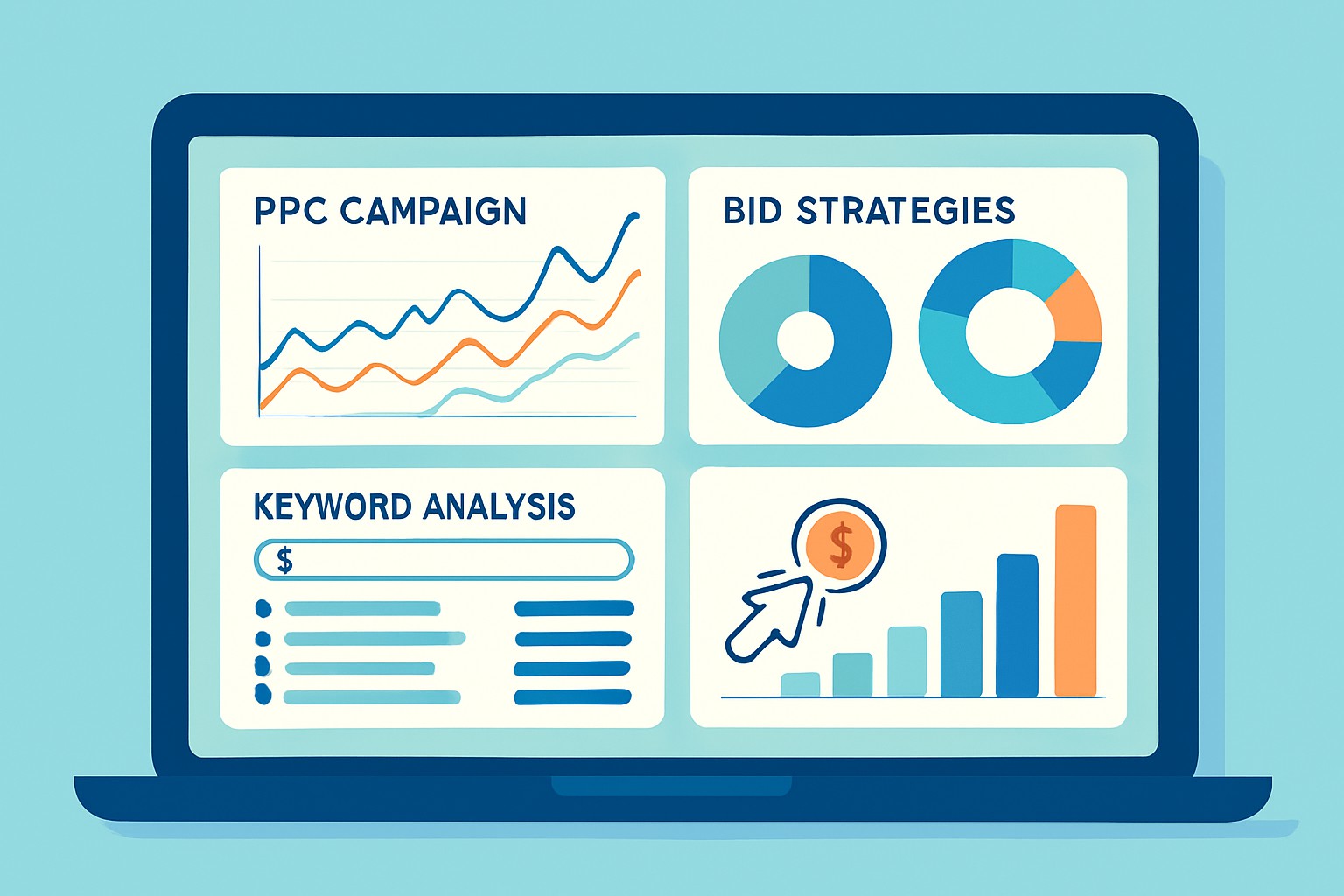
How to get more seo clients with proven outreach methods
Discover actionable outreach strategies designed to help you attract more SEO clients. Follow this p...

Effective PPC optimisation can really trim your ad spend while giving your campaign performance a nice little boost. You will find expert tips and practical hacks designed to help you fine-tune your paid search campaigns and squeeze the most value out of your investment.
It’s worth taking a moment to really grasp what PPC optimization is all about. Successfully trimming your ad spend without hurting performance takes a delicate balancing act. You must juggle keyword targeting, bid management and data-driven decisions while skillfully avoiding common pitfalls like irrelevant clicks and wonky attribution.
Keywords are the beating heart of any PPC campaign. Investing some elbow grease into detailed keyword research and closely managing your campaign usually pays off by cutting down on wasted spend. Adding long-tail and intent-driven keywords plus smart negative keyword management generally helps your ads connect with people who are truly interested and likely to take action.
Zero in on those long-tail keywords that really show user intent. This way, you attract more targeted traffic without wasting your budget.
Stay ahead by using negative keywords to filter out irrelevant searches that drain your resources.
Make it a habit to check search query reports regularly. It is like mining for new keyword gold while removing the ineffective ones.
Adjust your keyword match types carefully. Experiment with broad match modifiers or phrase match until you find the right balance between reach and precision.
Focus on keywords that tend to convert rather than chasing those with huge search volumes. This approach offers a smarter return on your investment.
Optimized bidding strategies often come to the rescue by trimming your cost per click (CPC) without throwing a wrench in your campaign’s performance—sometimes they even give it a bit of a boost. With a bit of careful tinkering on bid adjustments and a smart use of automation, advertisers can snag better ad placements without burning a hole in their pockets for each click.
Quality Score quietly sneaks in as a key player that many tend to overlook when dealing with CPC and ad placement. Advertisers who roll up their sleeves and actually improve Quality Score often find themselves paying less and enjoying better ad visibility—talk about a win-win.

Dashboard illustrating key components influencing PPC Quality Score and their impact on ad costs
Audience targeting is more than just matching keywords. It’s about truly connecting with the people who are most likely to convert. By focusing on specific audience segments, you can direct your ad budget where it really matters and cut down on wasted spend.
Dive into creating custom intent audiences by focusing on user behaviors and search activities that really match your product or service. Think of it as hearing what your potential customers are whispering before they shout.
Run remarketing campaigns to gently nudge back those visitors who showed some interest but didn’t quite commit. Sometimes all it takes is a little reminder.
Tap into in-market segments to connect with users who are deep in research or comparing products in your space because catching them at this stage can make all the difference.
Be ruthless about pruning audience segments that don’t fit your customer profile. This is a smart way to reduce wasted impressions and make your budget go further.
Tailor your ad creatives and offers based on clear audience insights to really spark engagement. After all, one size rarely fits all when it comes to people.
Timing and placement of your ads can really make or break how effectively your budget gets put to work. Focusing your spend on golden days and peak hours or regions that usually deliver the goods lets you squeeze every bit of value from your PPC budget
Sometimes, crafting the perfect ad copy feels like chasing a moving target. That’s why testing and tweaking your copy is essential if you want to see those click-through and conversion rates truly soar. A little experiment here, a slight word change there—these small tweaks can make a surprisingly big difference. Plus, it keeps things fresh and less dull for both you and your audience. So, roll up your sleeves and dive in; improving ad copy is as much an art as it is a science, and with a bit of patience, the results can be downright rewarding.
Improving ad copy performance is a moving target but usually pays off by lowering CPC through boosting CTR and engagement. Rolling up your sleeves to test and tweak messages and offers often brings noticeable gains.
Make it a habit to run A/B split tests on headlines, descriptions and calls-to-action. You would be surprised how small tweaks can make a big difference.
Add power words and emotional triggers that resonate with your target audience because they are like secret sauce for engagement.
Be sure your unique selling points or key differences stand out in the ad copy and don’t get lost in the noise.
Use call-to-actions that match where users are in their buying journey since timing is everything here.
Keep a watchful eye on what competitors are doing to grab fresh ideas and keep your messaging from going stale.
Without clear tracking in place, PPC optimisation can easily go off the rails. Setting up reliable conversion tracking and taking a close, thoughtful look at the data helps marketers make smarter calls that gradually but surely improve cost efficiency and campaign results.
| Optimisation Tip | Difficulty Level | Time To Implement | Expected Impact |
|---|---|---|---|
| Add and fine-tune negative keywords | Easy | About 1 hour | High (great for trimming wasted spend) |
| Tweak device and location bid modifiers | Medium | Half a day | Medium-High (a neat way to improve ROI) |
| Speed up and sharpen landing page relevance | Medium-High | 1 to 2 days | High (boosts your Quality Score nicely) |
| Run A/B tests on your top-performing ad copy | Medium | Ongoing | High (gives your CTR and conversions a solid kick) |
| Set up or double-check conversion tracking | Medium | 1 day | Critical (because data-driven decisions don’t lie) |
| Schedule ads to run only during peak hours | Easy | A few hours | Medium (helps keep costs in check) |
12 articles published
With over a decade of experience in data-driven marketing, Quentin Moreau is known for his analytical approach and innovative use of metrics to optimize online campaigns for maximum impact.
Read Pages
Discover actionable outreach strategies designed to help you attract more SEO clients. Follow this p...

Explore detailed insights into SEO costs for small businesses, helping you budget wisely and choose...

Explore the best books on SEO that equip marketing professionals with practical insights and strateg...

Choosing the right SEO consultant can make or break your digital success. Learn what key questions t...